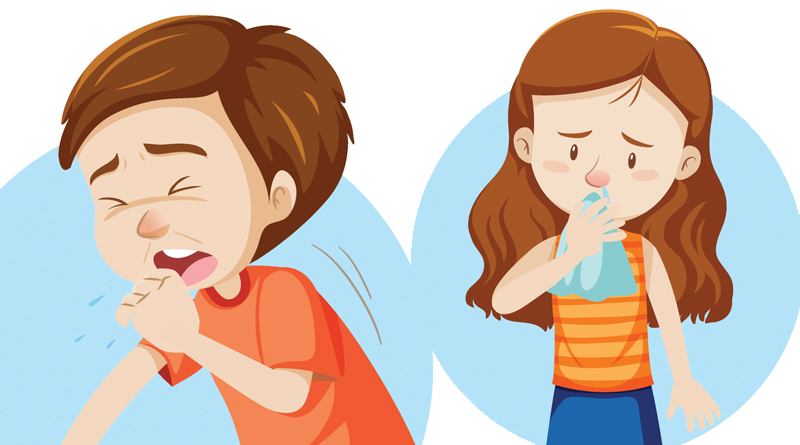Back to school: Beware of viral diseases
By: Diana Bello Aristizábal
In just a few weeks a new school year begins, and while it should not be assumed with paranoia regarding viruses that circulate in the environment, it is good to know which ones could probably hit after the summer break in order to take precautions at home and avoid massive infections in classrooms.
Monitoring children’s health at the beginning of the year is crucial because, during the summer, families travelled to different destinations of the world, increasing the risk of having respiratory diseases appearing and spreading.
According to Dr. Dadilia Garcés, an epidemiologist at Miami-Dade College, for this new season, four viruses could appear: flu or the common cold, syncytial virus, COVID-19, and influenza.
However, caregivers should not confuse these diseases with seasonal allergies that many children suffer from when they come into contact with some environment elements such as pollen.
These allergies, although they show up with similar symptoms of a cold such as nasal congestion, sneezing and watery eyes, they differ from respiratory viruses in that they don’t come with a fever and usually improve by 80 percent when the subject moves away from the place containing the allergen.
Nevertheless, the four viruses also have similarities, which is why it’s necessary to know their differences for there to be a timely diagnosis and treatment.
Flu or common cold is the easiest to manage since it usually lasts only a few days with symptoms such as general unrest, nasal congestion, and sometimes, fever that, in most cases, is not high.
Syncytial virus, which affects children under four years of age and with greater force those who start kindergarten, mostly at two years of age, tends to be severe to the point that many require hospitalization when there’s an acute nasal obstruction and lungs are compromised.
“In most cases, it starts as a common cold with symptoms such as nasal congestion, cough, and high fever that don’t improve, and the child begins to look very weak. When this happens, the recommendation is to visit the doctor immediately,” explains Dr. Garcés.
COVID-19, on the other hand, remains a threat to children. Against this, parents should remain vigilant because, according to Dr. Garcés, the Omicron variant and its subvariants have had a great impact on them, and more cases of symptomatic patients have been seen, who sometimes end up hospitalized, unlike other variants that often act silently.
It is especially important to be careful with minors who have a chronic disease, such as diabetes, as COVID-19 can be more aggressive in them. “In these cases, if there are symptoms of fever or general unrest, it is best to receive treatment as soon as possible,” says Dr. Garcés.
Finally, there is the influenza virus that spreads throughout the year, although the period of greatest activity is between December and February, according to the Centers for Disease Control and Prevention.
Children who suffer from it tend to deteriorate rather quickly, lose their appetite and have a high fever that does not improve with common medications. That is why, along with COVID-19, this virus is one of the riskiest on the list, and in some cases, it can attack severely.

Recommendations and warning signs
Since both influenza and COVID-19 can further compromise children’s health, the first recommendation is to go to the pediatrician when symptoms appear to rule out these two viruses through tests.
Special attention must be paid to children under two years of age, asthmatic or those with respiratory or lung diseases, and those who are immunosuppressed as they are more likely to endure health complications.
To prevent complications both in them and in the general child population, Dr. Garcés advises keeping the vaccination schedule up to date, including influenza vaccine and the two doses against COVID-19 that are already available for children over six months.
Another way to prevent the spread of respiratory illnesses is to encourage frequent handwashing, teach children not to put objects in their mouths, avoid contact with sick family members, and not send them to school or extracurricular activities if they have flu symptoms.
“If there is nasal congestion, cough, weakness or fever, it is better to keep them home for 1 or 2 days to avoid the incubation period and outbreaks in schools.”
Regarding the management of symptoms at home, avoid providing home remedies, follow dosage instructions of over-the-counter medications, always have a thermometer on hand to verify and control fever and take them immediately to the doctor if they show any warning signs.
According to Dr. Garcés, parents must see a doctor if the child has a high fever that doesn’t improve with medication or if it persists for more than 48 hours; also, if he or she begins to have a disturbance of consciousness, that is, doesn’t respond or looks drowsy, if wheezing is heard in the chest or if there are signs of hypoxia.


Pingback: Back to school: Beware of viral diseases – Doral Family Journal
Very Good. I like your blog. Your blog got me to learn a lot. Thanks for sharing such a nice article. I wish to see much more like this and check out this article as well Why Allergy Season is Getting Longer & Severe